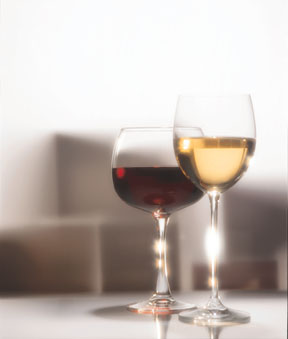For too long, rosé remained cast under the shadow of overly sweet and one-dimensional White Zinfandels. But the surge of popularity in North America has removed the myth that rosé wines are similar in character to the mass-produced White Zins. Learn how to craft your own rosé, whether starting from fresh grapes or from juice, in order to nail the color and aromatics you are looking to achieve.
Winemaker: Earl Ault, Cedar Mountain Winery, Livermore Valley, California.
There are several ways people make pink wine from red grapes. One way is the so-called Blanc de Noir method where a winemaker will whole cluster press, cold ferment, and take a slight blush from the limited skin contact. Winemakers could also crush, cold-soak for color, then press to tank. This adds a step that is avoided in method one, but makes for a richer blush wine.
If you are making a red wine to start with (Pinot Noir for example) some producers draw off pink juice after soaking, the so-called Saignée method. The remainder of the must is fermented red for another use. When doing it this way, keep an eye on pH. The red wine will be best if the grapes are picked at a higher pH than you want for the blush so an adjustment by acid addition to the blush may be required.
A final method is to complete step one as mentioned in the first method and then blend in some red wine to get just the right color. A typical addition would be 2 to 5% of a red with the color you desire. Petite Sirah is a good choice because it adds a pink color rather than a dusty rose brown.
In the past we have used Syrah and Cabernet Sauvignon. We currently have a source of very good Grenache. In 2016 we used the crush and soak method to produce a big cherry-berry Grenache Rosé. This year we tried the juice, ferment, blend back red method. Of the two, the first provided more body but the second gave a more lively and bright product. We are interested to see how this year’s will sell compared to last year.
The critical factors in all of this is to preserve the color through finishing, filtration, and bottling. Since free SO2 bleaches the color of wine, make sure it is set to the desired finished range prior to pressing off the skins or red addition. The pH will also have a strong effect on color. Lower pH (more acidity) intensefies the blush color. Set the desired final pH (I recommend 3.3 or so for crisp blush wines), then cold soak or add red to get the color.
For yeast, we like the Rhône 4600 (made by Lalvin) yeast for rosé. The yeast can produce big fruit bombs, but it’s also very efficient at making ethanol. Word of warning — watch out for high alcohol if you start with high Brix grapes or juice. We also take the fruit at the same parameters as for red wine in order to get full ripeness and richer body. We work hard to avoid malolactic fermentation of our fresh whites or rosé. Barrel fermentation is reserved for Chardonnay and reds, which are inoculated with lactic acid bacteria.
We bottle as soon as we can settle and cold/heat stabilize the wine. We will add cream of tartar for the cold stabilization process and then chill to 29 °F (-2 °C) for a week or so. Next we will finish (fine) with bentonite for protein removal. The final step for us is to filter to the wine to 0.45 micron (sterile) which is recommended to prevent later malolactic fermentation.
Winemaker: Nathan Carlson, Center of Effort and Fossil Point wines, Edna Valley AVA, California.
I want my rosé to be fresh, with bright acidity, and fruit character balanced by acid and even some light herbal notes. Concentration is less important than balance. After all, I want a refreshing summer wine! Of course there are famous rosés like Tavel that can be much more substantial and heavily textured — but I think those are very difficult to pull off.
I prefer my rosé to be dry, with a good balance of fruit character. For grapes, I predominantly use Grenache, some Syrah, sourced from an older vineyard that is farmed specifically for rosé. When selecting yeast and fermentation, I’m looking for a moderate fermentation pace, with strong aroma development, low H2S production, and cool-temperature tolerant while not a nutrient hog.
I do direct-to-press with whole clusters as much as possible. We try really hard to extract as little color and bitterness as possible, and so making very early press cuts, observing color, flavors, and pH shift is important. Our yield is ~120 gal/ton (500 L/metric ton) with a commercial membrane press. It is really useful to hold the press juice separate from this lightly pressed fraction — we undertake separate fining, typically with skim milk, PVPP, and bentonite, and are sure to adjust the pH, as the press wine will have a much higher potassium content and higher pH. After fermentation, we reassess and add a portion of the treated hard press wine into the light press portion. This gives you more options, and avoids over-treating the entire wine. If Brix is excessive, we will bring the wine back with amelioration. Target would be 12.5–13% alcohol potential. Just don’t forget to acidulate the water back!
Color can be very difficult. Adding back red wine at bottling can backfire by introducing pigments which can oxidize and brown, taking the wine in an orange direction quickly. Variety will have a lot to do with eventual color.







